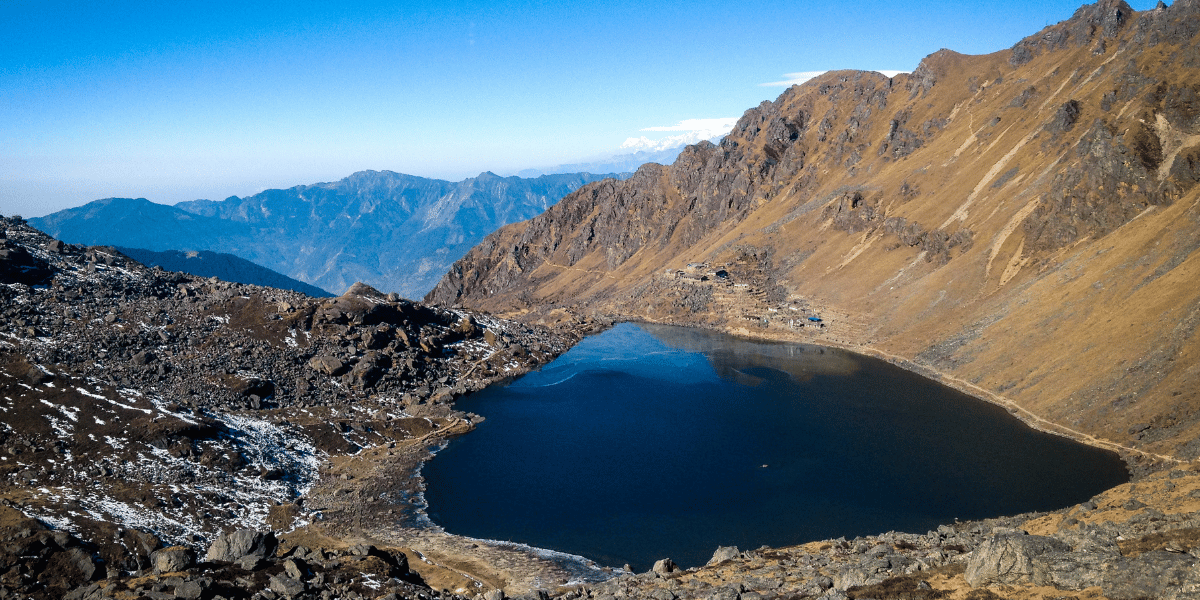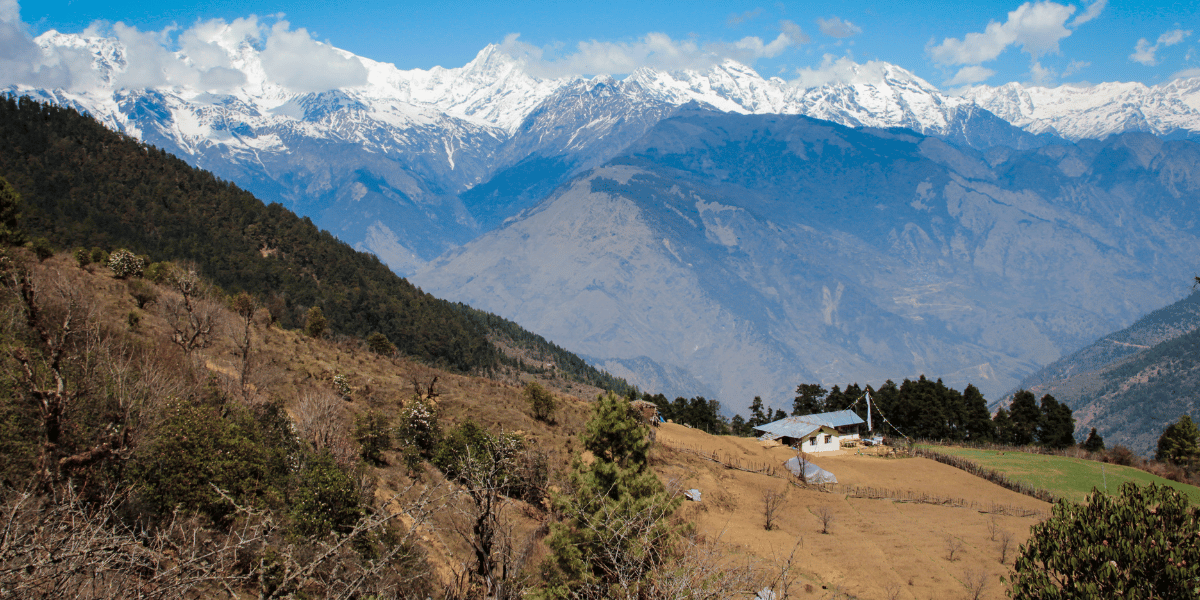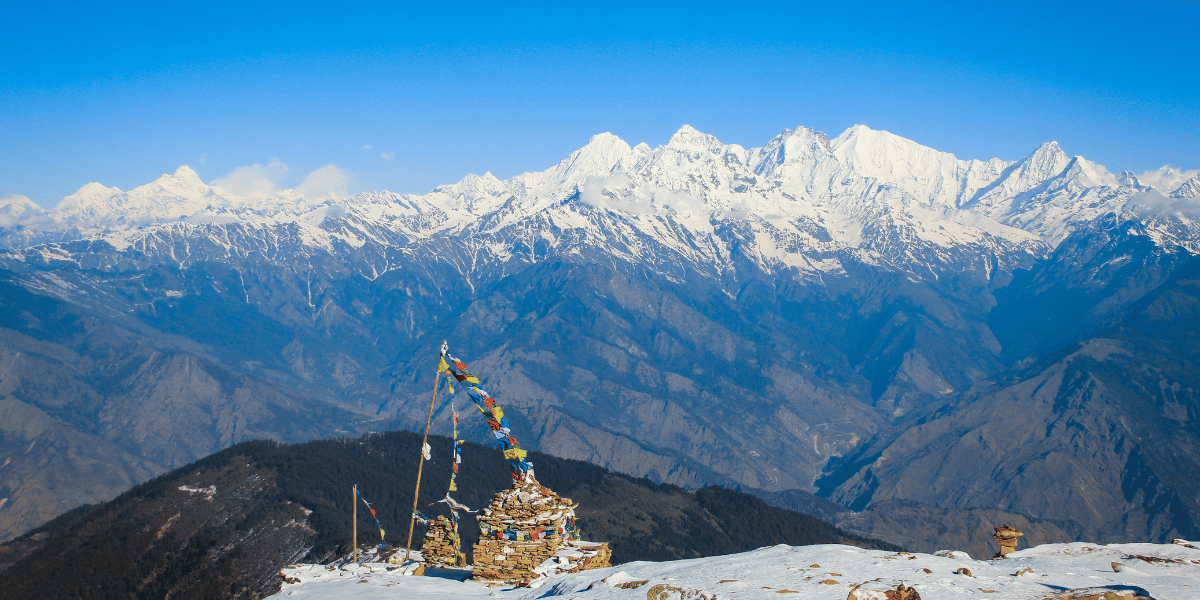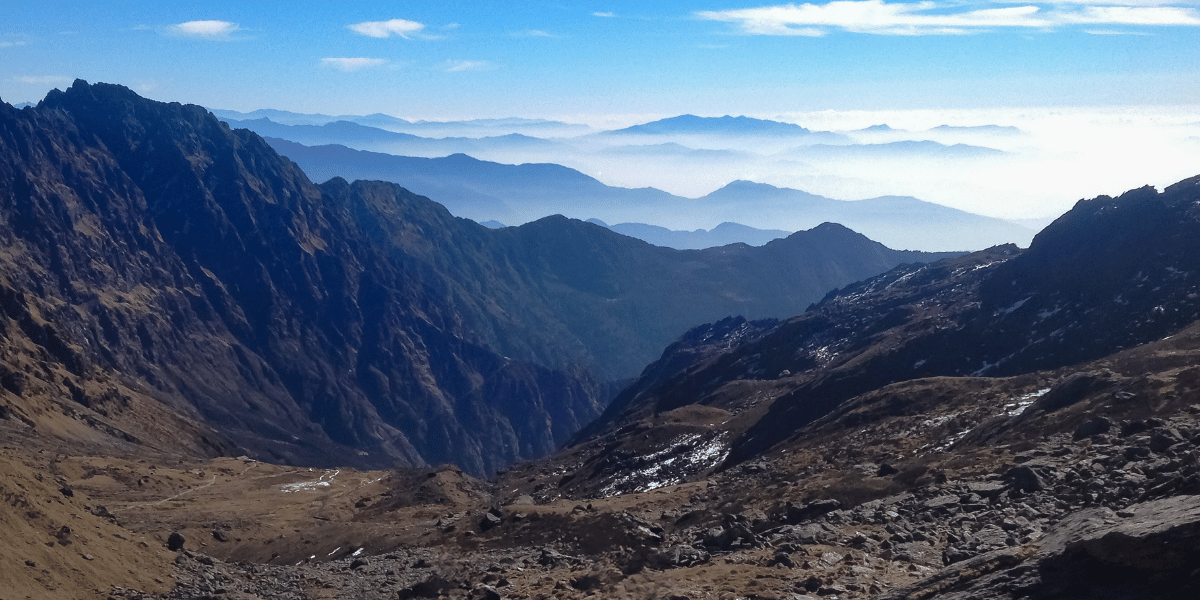The Langtang Gosaikunda Lake Trek is one of the most beautiful treks near Kathmandu and perhaps one of the most rewarding ones. This trek is a 13-day journey that will lead you to the breathtaking Langtang region, known as one of the most popular trekking routes after Everest and Annapurna. Do you want to see the mountains and have an authentic tracking experience? If you're looking for a trek that is both easy and rewarding, then this is the perfect choice for you. It offers a unique glimpse into the geography of Nepal, just a short distance away from the busy city area. During the trek, you will have the opportunity to witness the astounding mountains, stunning lakes, and picturesque landscapes and immerse yourself in the vibrant culture of the Langtang region. The trek offers a diverse range of landscapes and cultural experiences, including deep gorges, rocky terrain, pine forests, vast yak pastures, an insight into the Buddhist religion, ancient monasteries shrouded in mystique, charming rustic villages, and a magnificent glacier that descends from the towering mountains.
During your trek, you will encounter some truly captivating natural beauty, including stunning landscapes, from rare and undiscovered terrain to towering mountains and viewpoints that provide you with a magnificent view of the valley. The Langtang region offers a fascinating glimpse into the rich cultural diversity of Nepal, with a strong influence from the Tibetan Buddhist religion and culture. The Langtang region is located near the borders of Tibet, which contributes to its unique and rich culture. Throughout the trek, you will explore picturesque villages, striking viewpoints, and wonderful attractions. Here is a list of the sites you will encounter:
Syabrubesi- Trek Starting Point
Syaburbesi, situated at an elevation of 2,380m above sea level, serves as the starting point for the trek. It is located approximately 120 km from Kathmandu, on the border between Nepal and Tibet. The road to Syabrubesi is accessible for transportation, which can drop you off at the starting point. From here, you can begin your walk to Langtang. The location is nestled in a picturesque gorge, surrounded by lush green vegetation, and situated between two hills. The road connecting two countries has made it a popular route to reach Lhasa, Tibet.
Langtang Village
The villages are located in peaceful and picturesque settings, offering a breathtaking panorama and an immersive cultural encounter. Langtang Village is situated at an impressive elevation of 3,400m above sea level, making it one of the villages you will encounter on your journey. It is one of the biggest settlements in Langtang Valley. The settlement in the Langtang Valley was heavily impacted by the 2015 earthquake, making it one of the most affected areas in the region.Recently, it has experienced a remarkable resurgence, with a multitude of houses and several local lodges and teahouses. The village is situated at the foot of the majestic Langtang Lirung mountain, which stands at an impressive elevation of 7,227m. From here, one can enjoy a breathtaking view of the surrounding area. Around the village, you'll be treated to incredible scenery of the hills and mountains that encircle it, creating an incredible sight.
Kyanjin Gompa
Kyanjin Gompa is a stop along the trek where you can spend the night before continuing on to the vantage point of Kyanjin Ri, which is situated at an elevation of 3,870m above sea level. Kyanjin Gompa, also known as Kyanjin Monastery, derives its unique name from the presence of an ancient Tibetan Buddhist monastery in the village. This is a popular stop for trekking before hiking up to the vantage point of the valley, which is located around 3 km from the village. The village is filled with charming local lodges, friendly locals, bakeries, and cafes where you can enjoy delicious bakery items and freshly brewed coffee while taking in the breathtaking mountain views. The village is nestled amidst majestic snow-capped mountains, creating a serene and enchanting atmosphere that exudes tranquility and abundance.
Kyanjin Ri
Kyanjin Ri, situated at an impressive elevation of 4,773m/15,644 ft, offers a breathtaking viewpoint of Langtang. From here, you can marvel at the majestic mountain ranges and awe-inspiring landscape. The location of this place is approximately 3 km away from Kyanjin Gompa. From here, you can enjoy a stunning view of the majestic mountains, including Langtang Lirung at 7,234 metres, Langtang Ri at 7,205 metres, Dorje Lakpa at 6,966 metres, and Loenpo Gang at 6,907 metres. Aside from the mountains, you'll have an unparalleled view of the valley and the surrounding area, making the entire experience surreal and breathtaking, quite literally.
Tserko Ri
The trek reaches its peak at an impressive elevation of 5,033 m/16,531 ft above sea level, providing one of the most breathtaking viewpoints along the route. This peak, known by different names, including Tserko Ri (Cherko Ri), is located in the northeastern part of the Langtang valley, near the Baden-Powell peak. The sight of the snow-capped mountains and the valley is absolutely breathtaking. This vantage point provides an awe-inspiring view of the magnificent Himalayan mountains, showcasing the Annapurna range, Mt. Manaslu, Ganesh Himal, Dorje Lakpa, Langtang II, and Langtang Lirung. Tserko Ri can be reached conveniently from Kyanjin Gompa, with a round trip that typically takes around 5 hours. The area around the viewpoint lacks teahouses or any human settlements, so it's a good idea to bring some snacks and water along for the trip from the local lodge/tea house.
The Holy Lake
Gosaikunda is a well-known destination for its pristine lakes, located in the Rasuwa district of the Langtang region. This alpine freshwater lake is situated in Nepal's Langtang National Park at an elevation of 4,380m above sea level. The lake is beautifully pristine, spanning roughly 13.8 hectares (34 acres). Located north of Kathmandu, it is situated between the Helambu and Langtang valleys. The lake is truly stunning, with its serene waters reflecting the majestic mountain range that surrounds it. Not only is it a natural wonder, but it also holds great significance in religious traditions. The Hindu and Buddhist pilgrimages to Gosaikunda Lake are highly regarded. According to legends, the deity Shiva created this sacred lake by piercing a glacier with his trident to quench his thirst after consuming a poison that had the potential to destroy the world.
What to expect from this trek?
This trek offers a wonderful chance to witness the majestic snow-capped mountains up close and immerse yourself in a rich cultural experience. It promises a truly unique and unforgettable trekking adventure. The trek begins with a scenic road trip to the starting point of the trek, Syabrubesi, from where you will begin your walk. As you start on your walk, you'll gradually witness the beautiful transition from dense green forests to alpine landscapes and eventually vast yak pastures. Majestic yaks roam freely, creating an incredible scene with tranquility and crisp, fresh air. The hiking trails are impeccably maintained and thoughtfully designed, enhancing your walking experience with a sense of tranquility and pleasure. The trail showcases a rich variety of flora and fauna, with the landscape gradually changing to match the surrounding environment. The trail follows both an ascent and a descent, making your walk interesting and rewarding. There are local lodges and teahouses throughout the trail where you can take a break and enjoy some delicious butter tea. During your trip, you will be provided with simple accommodations and basic amenities. These places may not offer as many facilities as city areas, but this adds to the uniqueness of your journey. The journey will take you through rustic and traditional villages, each with its own fascinating beauty and stories. Along the way, you'll hike up to vantage points like Kyanjin Ri and Tserko Ri, which offer breathtaking views of the valley and the majestic mountains that surround it.
After exploring the Langtang Valley, you will trek back the same way until reaching the Lama Hotel. From there, you will change your path and trek to a unique and beautiful freshwater lake called Gosaikunda. This lake holds great religious significance and is a truly remarkable site. Once you arrive at the lake, you'll be captivated by its natural beauty and the stunning landscape that surrounds it. The view of the lake, with the small mountains surrounding it, is truly exquisite and almost otherworldly. After exploring the lake, make your way down to a place called Dunche. From there, your transportation will take you to Kathmandu, marking the end of your trek. The trek will be led by a highly experienced guide who will provide you with all the necessary information about the surrounding area and prioritise your safety to ensure the best trekking experience possible.
What make this trek different?
The Langtang Gosaikunda Trek is a great option if you're looking for a more easy and relaxing trek. This trek is situated in the Langtang region, conveniently accessible from Kathmandu. It offers stunning vistas of the mountains and a remarkable landscape near the city area. This trek offers a range of difficulty levels, from easy to moderate. The trail is well-maintained and relatively easy compared to other treks. Throughout the trek, you will experience incredible cultural and natural wonders that will leave you in awe. The view from the viewpoint offers an outstanding view of celestial sunrises and sunsets, with uninterrupted vistas of towering mountains throughout your trek. It's a worthwhile experience. This trek is suitable for individuals with basic hiking experience, as the trails are relatively easy and not overly physically demanding. This trek is perfect for those who are looking to start their trekking journey. Set off on a captivating journey to discover the diverse and unique natural beauty of Nepal and indulge in the ultimate trekking experience.
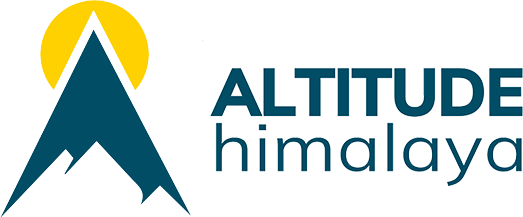

 Adventure
Adventure
 Couple
Couple
 Family
Family
 Luxury
Luxury
 Motorbike
Motorbike
 Photography
Photography
 Wildlife
Wildlife
 Yoga
Yoga
 Annapurna
Annapurna
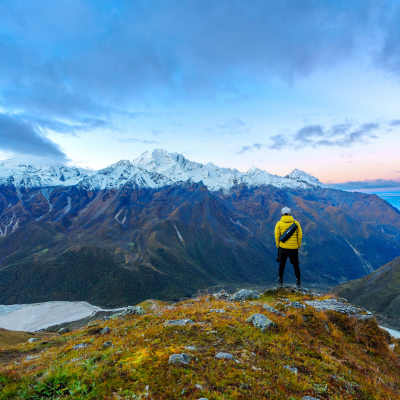 Langtang
Langtang
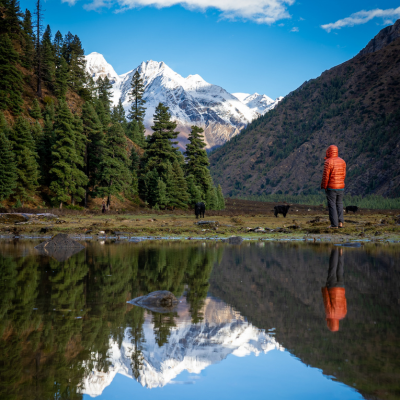 Dolpo
Dolpo
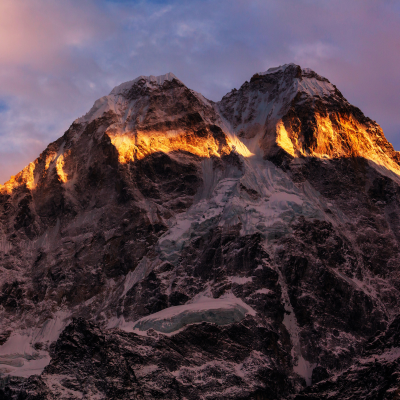 Eastern Nepal
Eastern Nepal
 Everest
Everest
 Manaslu
Manaslu
 Western Nepal
Western Nepal
